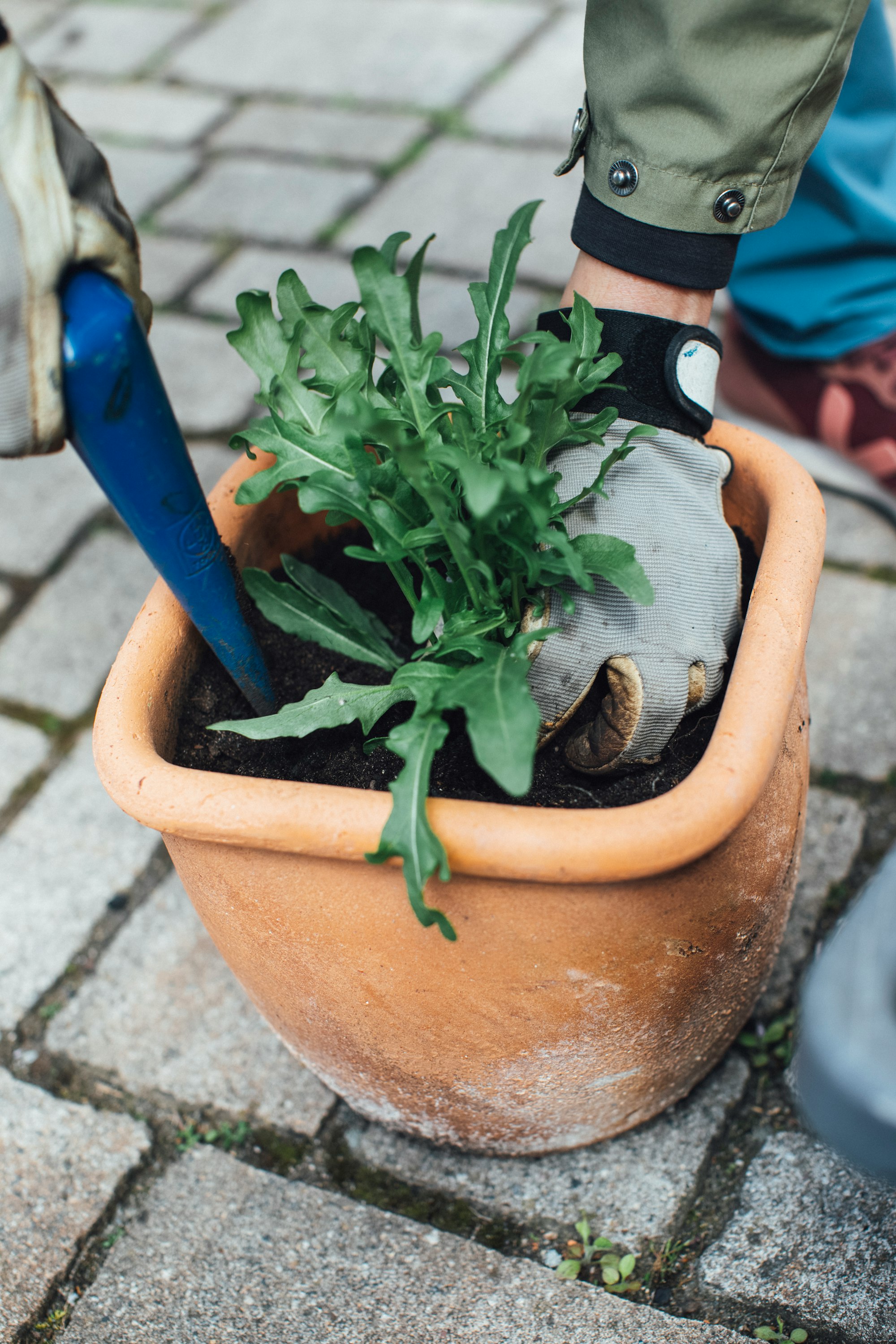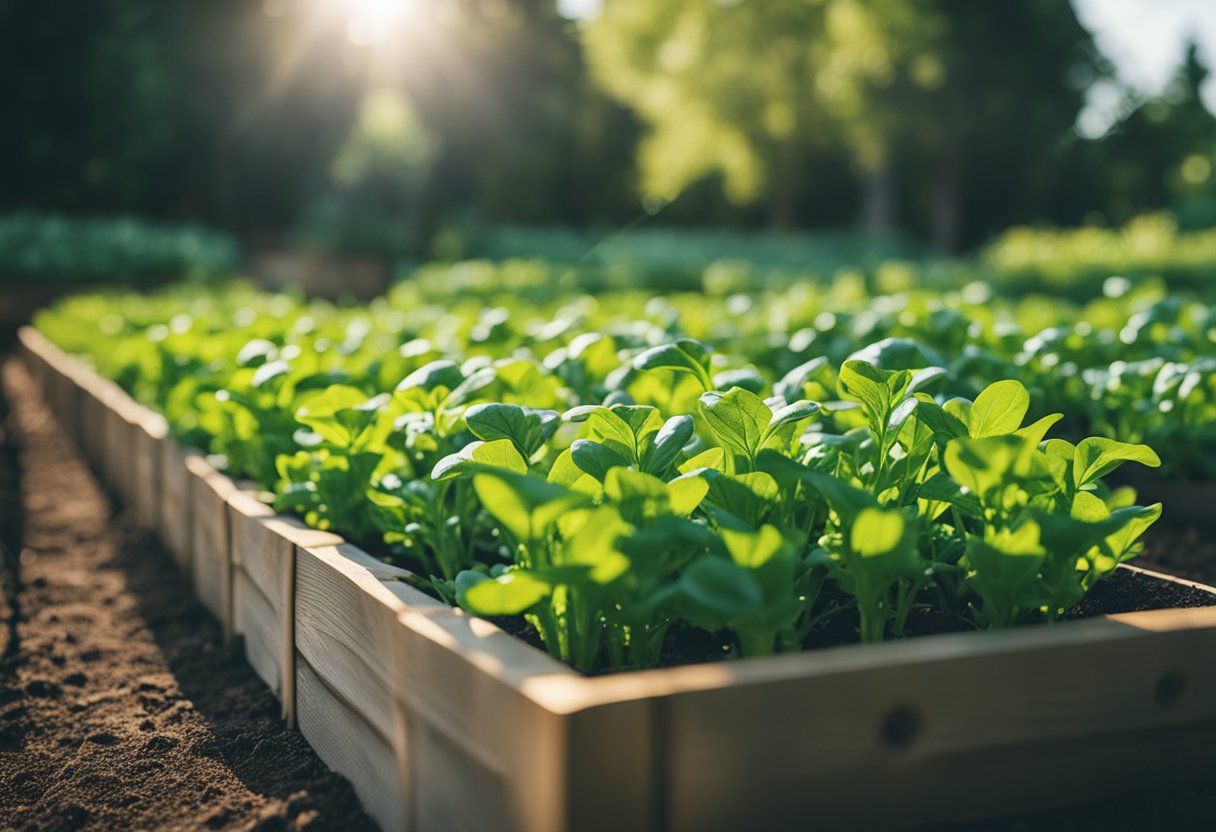How to Grow Arugula
Arugula is a fast-growing, cool-season leafy vegetable from the mustard family. Known for its tangy, mustard-like flavor, it is often used as a salad green and can also be called "rocket" or "roquette."

Table of Contents
To grow arugula in your garden, plant seeds 1/4 inch deep and 1 inch apart, ideally in cooler temperatures between 45°F and 65°F.
As the plants develop, thin them to 6 inches apart, ensuring they have enough space to grow healthily.
About Arugula
Arugula, a rocket or roquette, is a leafy green vegetable from the Brassicaceae family.
It is a fast-growing, cool-season plant with a tangy, mustard-like flavor popular in salads and garnish in gourmet dishes.
The scientific name for arugula is Eruca vesicaria, and it comes in various types, including the wild variety Eruca sylvetta.
It is an annual plant, meaning it completes its life cycle within one growing season, and it is closely related to other plants in the mustard family, like broccoli and cabbage.
When growing arugula in your garden, remember that it prefers cooler temperatures and can tolerate a little frost, making it an ideal choice for planting after the last spring frost date.
Growing Arugula
To grow arugula, plant seeds about ¼ inch deep and 1 inch apart in rows with a 6-inch spacing between them.
You can start sowing the seeds as early as three weeks before the last frost in spring. Arugula prefers cooler temperatures and can thrive in soil between 45°F and 65°F.
Choose a location with full sun or partial shade for the best results, and arugula can also be grown in containers if space is limited.
The ideal soil should be well-draining and amended with organic matter. Keep the soil moist to ensure proper germination within 7 to 10 days.

Caring for Arugula
Sun and Temperature
Arugula thrives in cool weather, so plant it in partial shade to help it tolerate hotter temperatures. Ideally, it grows best in temperatures of 45-65°F (7-18°C).
Water and Humidity
Keep the arugula consistently moist by watering it frequently. Ensure the soil doesn't dry out, but avoid overwatering to prevent root problems.
Soil
Choose well-drained soil for your arugula plants. Add compost to the soil to provide nutrients and improve drainage.
Fertilizer
Feed your arugula with a balanced liquid fertilizer every four weeks. This ensures a rich supply of nutrients for healthy growth.
Repotting
Select a pot with drainage holes if you're growing arugula in containers. Repot your plants when their roots become crowded to promote continued growth.
Pruning and Propagation
Prune arugula plants regularly by harvesting outer leaves, encouraging bushier growth.
Allow some plants to flower and set seeds, ensuring a continuous supply of arugula in your garden.
Troubleshooting Plant Problems
Growing Problems
Arugula is a cool-season crop and may struggle in hot weather.
If your arugula starts to bolt (flower and set seeds), it can cause the leaves to become bitter.
Plant arugula in partial shade during warmer months to prevent bolting and moisten the soil.
Height can be affected by insufficient sunlight or overcrowding.
Make sure your arugula gets at least 4-6 hours of sunlight and space them properly, with at least 6 inches between each plant.
Pests and Diseases
Flea beetles and slugs are common pests that affect arugula.
Flea beetles can create small holes in the leaves, while slugs chew large irregular shapes on the edges.
To control these pests, apply diatomaceous earth around arugula plants or use a natural repellent and remove slugs by hand.
Common diseases include fungal infections or bacterial leaf spots.
To mitigate disease risks, use well-draining soil, avoid overcrowding plants, and practice good garden hygiene by removing plant debris and weeds that can harbor pathogens.
Companion Planting
Companion planting can help with pest control and create a favorable growing environment for your arugula.
Planting arugula alongside beans, peas, or lettuce may discourage pests like flea beetles.
Moreover, cilantro or basil planted nearby may boost arugula's flavor, while mint can provide a natural repellent against pests like slugs.
Conclusion
Growing arugula provides a nutritious and versatile leafy green that can be used in various dishes.
Its peppery taste is a fantastic addition to salads, sandwiches, and pizzas and can be used as a base for mesclun.
You can also incorporate arugula into cooked dishes such as soups or mix it with eggs for a flavorful meal.
Remember to plant arugula in cool weather, sow seeds about 1 inch apart, and space them 6 inches after thinning.
Keeping your arugula plants in the right conditions will help you achieve the peppery flavor that makes them an excellent addition to fresh and cooked dishes.
With careful attention and loving care, you will enjoy the benefits of home-grown arugula in no time!

Frequently Asked Questions
What is the ideal spacing for arugula plants?
Plant arugula seeds about 1 inch apart in rows 10-12 inches apart. Thin the seedlings 3-4 inches apart as they grow for optimal development.
How long does it take for arugula to grow?
Arugula generally takes 45-60 days to grow after planting and germination.
What are the sun and water requirements for arugula?
Arugula can be grown in both full sun and partial shade and prefers cool temperatures, ideally between 40°F and 55°F.
Provide consistent and even moisture to ensure healthy growth.
Can arugula be grown during the summer?
While arugula thrives in cooler temperatures, it can also grow during warmer months. However, summer heat may cause the plant to bolt quickly or taste more bitter.
What is the harvesting process for arugula?
To harvest arugula, use scissors or a knife to cut the leaves close to the base of the plant. Take only ⅓ or less of the plant for continuous regrowth and harvesting.
What is the preferred growing condition: full sun or shade?
Both full sun and partial shade conditions are suitable for arugula growth. Just ensure the plant receives enough sunlight while maintaining optimal cool temperature conditions.


